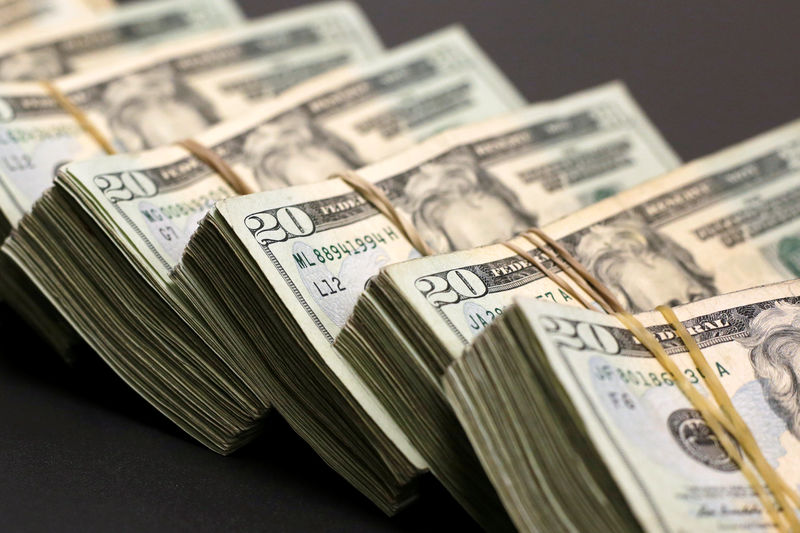Nvidia and TSMC to unveil first domestic wafer for Blackwell chips, Axios reports
Investing.com - The U.S. dollar edged higher Friday, rebounding ahead of the widely-watched monthly jobs report after the previous session’s slide, while the euro slipped lower after weak German industrial orders.
At 05:45 ET (09:45 GMT), the Dollar Index, which tracks the greenback against a basket of six other currencies, climbed 0.5% to 102.325, after plunging nearly 2% to a six-month low on Thursday, its worst day since November 2022.
Dollar to suffer a crisis of confidence?
The greenback attempted a minor comeback Friday after the previous session’s sharp selloff in the wake of President Donald Trump announcing a universal 10% tariff on all imports, alongside steep country-specific levies, reaching up to 54% on Chinese goods.
The aggressive trade measures sparked a sharp selloff in U.S. equities, with major indices posting their worst session in months as investors scrambled toward safe-haven assets, driving down U.S. Treasury yields and weighing on the dollar.
Even with Friday’s gains, Deutsche Bank (ETR:DBKGn) warned of the risk of a crisis of confidence in the U.S. dollar, the world’s No.1 reserve currency, saying major shifts in capital flow allocations could take over from currency fundamentals and currency moves become disorderly.
"Our overall message is that there is a risk that major shifts in capital flow allocations take over from currency fundamentals and that FX moves become disorderly," Deutsche Bank’s George Saravelos said in note.
The all-important jobs report for March is due for release later in the session, as investors seek clues concerning the health of the U.S. economy given the growing fears over the impact of Trump’s levies on growth and inflationary pressures.
Additionally, Federal Reserve Chair Jerome Powell is set to speak later in the session, as the central bank appears to be caught between an almost certain spike in consumer prices and the mounting risk of recession as consumers and businesses cut back.
Fed fund futures now imply around 100 basis points of cuts this year.
Euro hands back some gains
In Europe, EUR/USD traded 0.7% lower to 1.0975, handing back some of Thursday’s gains when the single currency jumped 1.8% - its biggest daily rise since November 2022 - as high as 1.1147, a level not seen since late September.
“There is some massive trend resistance in the 1.11-1.12 area - marking its bear trend off its 1.60 high in 2008,” said analysis at ING, in a note. “We’ll probably need to see another big move lower in US equities to take out that area near term. However, we suspect buyers will emerge in the 1.1020 as doubts continue to grow about a sea-change in the dollar’s pre-eminient position as a store of value.”
Data released showed German industrial orders stagnated in February and January data were upwardly revised, showing that Germany’s industrial sector could have bottomed out but the recovery may be slow.
Germany’s manufacturing sector showed signs of recovery in March, with its first production increase in nearly two years, the HCOB Germany manufacturing PMI showed on Tuesday.
GBP/USD traded 1% lower to 1.2971, retreating after climbing to its highest level since October during Thursday’s session.
“GBP/USD has come a long way in a short period of time and may be due some consolidation in the 1.30-32 area,” ING added.
Aussie dollar slumps
In Asia, USD/JPY traded 0.3% higher to 146.44, after dropping 2% to a six-month low in the previous session.
USD/CNY traded largely unchanged at 7.2821, with the onshore Chinese markets closed for a public holiday.
AUD/USD slumped 1.9% to 0.6207, with the risk sensitive Aussie dollar, which often acts as a liquid proxy for the yuan, slumping as traders shunned risk.
